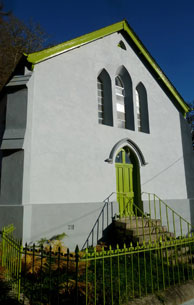Enquiries haldonbelvedere@gmail.com Tel: 01392 833846
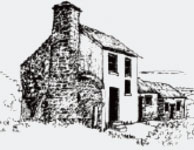
Hill Farm, Landkey, Barnstaple

Former Brewery,
Princes Street, Paignton
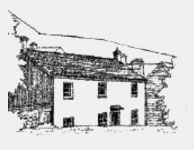
Mary Magdalene Churchyard, South Molton
A selection of our 43 past projects
Cricklepit Mill, The Quay, Exeter:
The restoration of the old mill and water wheel was the second large project undertaken by the Trust and completed in 2002. It received the Michelmores’ award Heritage Project of the Year in 2003.
The mill is of uncertain date but probably existed as a corn mill in the 15th century. It had been empty since the 1950s. The mill is situated in the Exeter Quayside within a group of buildings that served the important wool trade so vital to the Devon economy during historical times. The structure was so dilapidated and dangerous that there were demands for its demolition. Fortunately the Trust was able to take the building over and to complete a restoration that resulted in attracting the near perfect tenant in the form of the Devon Wildlife Trust. Now visitor’s see the mill structure and watch the waterwheel rotate to provide power to the building.
Hill Farm, Landkey, Barnstaple:
The farmstead had become part of a Devon County Council smallholding but was redundant for current agricultural purposes being separated from the main farm group by a road. Its principal building is a one-roomed cottage of probably a 16th century date. This cottage was semi-derelict and made habitable again by the Trust.
18-21 Market Street, Tavistock:
Tavistock, whose architectural attractions still reflect its historic importance as an ecclesiastical centre, a market town and an industrial community, was substantially rebuilt in the 1840s by the then Duke of Bedford from the profits of the nearby copper mines. Market Street is part of the town centre and when nos. 18-21 were purchased by the Trust in 1984 for a nominal sum from West Devon District Council they were in a state of collapse. Completion in 1988 enabled the properties to be sold and they are now in use as dwellings and shops.
33-37 North Street, Okehampton:
These early 19th century listed town buildings were originally purchased by Devon County Council for road scheme purposes for which the whole site was not eventually required. A public enquiry was held by the Department of the Environment, following which it was made clear to the DCC by the Secretary of State that the buildings must be preserved. The Trust subsequently acquired the buildings, put them in good order and restored the wheel-pit of the original mill. They were acquired in 1992 by English Nature for use as offices.
Former Brewery, Princes Street, Paignton:
Built in the early to mid 19th century and originally owned by Starkey Knight and Ford, these premises were last used as a brewery and bonded warehouse prior to the Second World War. Taken over by Whitbreads in the early 1960s, they were disused for most of the next twenty years. In 1982 the Trust convert the building to a shop/workshop on the ground floor, with a separate 3 bedroom flat. Work was completed early in 1983. The buildings quickly found a new owner and the restoration improved this area of Paignton.
38 Holloway Street, Exeter:
What is known as the Elizabethan house in Holloway Street, Exeter, is all that remains of Larkbeare House. The original house was late mediaeval and its history is closely allied to the rise and fall of Exeter’s leading merchant families associated with the woollen trade. Five mayors of the city are also connected with the house. In 1977 the Historic Buildings Division of Exeter City Council won their case for the restoration of 38 Holloway Street against the owner’s wishes for demolition. Restoration commenced in 1979 when the building was converted to a house with medieval roof trusses and a coffered ceiling.
No’s 6 – 8 Mary Magdalene Churchyard, South Molton:
This group of 3 derelict cottages was the first project to be completed by the Trust following its formation in 1973. The initial site inspection and feasibility assessment was in fact made in August of that year. The cottages, probably early Victorian and built of cob, stone, brick and timber framing with a slate roof, were not listed and could not be regarded as being of any special architectural merit. Nevertheless the Trust considered that as the Churchyard is within a Conservation Area and is visually and environmentally important as a whole, these particular properties were worthy of restoration.

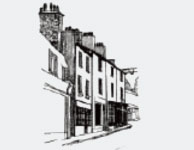
18-21 Market Street, Tavistock

33-37 North Street, Okehampton
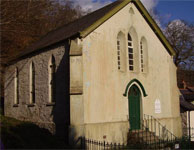
Morwellham Chapel before (above)
and after restoration (below)
